
From Biblical Family to Modern Family
Photo by © Can Stock Photo Inc. / goldenKB
1st in the series, “Modern Family?”
Ephesians 5:21-6:9
Larry L. Eubanks, First Baptist Church, Frederick, Maryland, April 3, 2016
This morning we begin a series on the family, and we’ve given it the title of “Modern Family?” but with a question mark. What we are experiencing is a revolution in the concept of family, and it’s one that has a lot of Christians unsettled. It’s causing a lot of controversy.
That’s because to a lot of people the definition of family is something that is fixed by the Bible, but what we are seeing in modern life is that the definition of family has become fluid, it’s changing, and that can’t be good.
It seems that a family can be whatever anyone decides it to be, and to many that feels like what is described in Judges 21:6—“In those days there was no king in Israel, and everyone did what was right in their own eyes.”
So the question we begin with is not, “What does the modern family look like?” but “What should the modern family look like?”
And the standard answer is that the modern family should look like a biblical family. So what does a biblical family look like?
Now, before I start down this path, let me state up front my assumption about you, because you need to know what I assume about you. And it’s this: I’m assuming that you care what the Bible has to say. Not what you’ve been told what it says, but what it really says.
Because I’ve learned two surprising things the last few years. First, the Bible often doesn’t say what I was always taught that it says. But one thing I was taught is that when what I am told the Bible says conflicts with what the Bible actually says, I go with what the Bible actually says.
People claim the Bible says all kinds of things that it doesn’t actually say. So I read and study the Bible using every tool available, and then I go with what I find, regardless of what I’ve heard. Even if it goes against what I have previously understood or believed.
But here’s the second surprising thing that I’ve learned: not every Christian is interested in what the Bible really has to say. If it conflicts with what they already understand or believe, they’ll ignore it and go with what they already understand and believe, and find a way to make the Bible support that.
Because holding onto their beliefs is more important than allowing the Bible to speak to them and actually shape their beliefs.
So I’m assuming that you want to know what the Bible actually says, and when you know what it actually says, you’ll not ignore it but bring your understanding and belief in line with what the Bible actually says.
That’s what it means to be a Bible-believing Christian.
So, onward: The first thing I want to do is expose the myth of what some people call the “biblical family.”
The Myth of the “Biblical Family”
Here is a typical definition given by a conservative Christian group called the Family Research Council, which says its mission is “to advance faith, family and freedom in public policy and the culture from a Christian worldview.”
“The Bible defines ‘family’ in a narrow sense as the union of one man and one woman in matrimony which is normally blessed with one or several natural or adopted children.”
Now I want you to notice what they’ve done: they’ve defined a biblical family simply and solely by its parts. Husband, wife, children. That’s it. Husband, wife, kids. So using some familiar TV families, let’s look at some pictures of a “biblical family”:
According to their definition, this is a biblical family: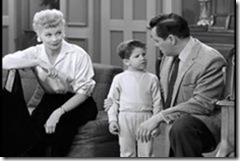
And this is a biblical family:
And this:
And this:
And this:
But then we started seeing families that looked like biblical families, but…
I mean, it’s got mom, dad, three kids a dog and a cat, but biblical? How about this one:
Married with Children in a way lifted up traditional family values by having us laugh at the exact opposite of a traditional family.
But still, there’s mom, dad, two kids. That fits the definition that the Family Research Council gave us.
Okay, this one looks more like a biblical family…
…until you put them into the larger family unit:
So here you have the traditional “biblical” family of mom, dad, and kids; you have her gay brother and his partner/husband who are raising an adopted daughter, and their father, a wealthy widower who has married a beautiful Hispanic woman who is his children’s age, who brings a Hispanic son into the marriage and then they together have a son who is younger than his own grandchildren.
So it’s a Modern Family, but it sure isn’t a biblical family, is it? And that’s where a lot of conservative Christians get all tied up.
Because this family doesn’t look at all like all the families they know or all the families they are used to seeing on TV.
But what they have done is take what they are used to seeing and call it “the biblical family.”
And then you have this:
One guy, four wives.
And my wife won’t let me have more than one dog.
So you see the evolution of the family through TV, and it reflects what’s happening in society.
In researching this series I found another Christian group promoting the biblical family:
Biblical Families.org
Here’s what BiblicalFamilies.org says on their website about biblical families:
“Biblical Families is a ministry run by a group of Bible-focused, Christ-centered, Spirit-filled Christian believers desiring to support, defend, and encourage Biblical-based marriages, including those with more than one wife.
On their website they say that what we call plural marriage or polygamy, polygyny – the Bible simply calls “marriage”.
And you know what? They are right.
See, what we call the biblical family looks more like the families we grew up in and saw on TV than it does the families we see in the Bible.
Take a look:
- Abraham had one wife and one concubine, and had a son with each of them.
- Jacob had 12 sons by two wives and their two handmaidens
- David had six wives and numerous concubines
And there is nary a word of criticism of any of them because of this.
- Solomon had 700 wives and 300 concubines, and that is presented in Kings and Chronicles as a good thing, as a sign both of his great wealth and his diplomacy that led to peace. The criticism of Solomon isn’t about his having more than one wife, but having “too many” wives—in other words, his excess—but mainly because of the idolatry that he allowed his wives to bring along.
- Rehoboam had 18 wives and 60 concubines.
None of these families represent “the biblical family”, but all of them are in the Bible, and without criticism.
But let’s look closer at families in the Bible. How many of you men, when you decided to get married, asked your wife’s father for her hand in marriage? I did. It was a formality, and a tradition that showed respect, but I don’t know what I’d have done if he’d have said no.
There was no way he was going to do that, but if he had said no I promise you Pam would have read him the riot act and told him she was marrying me and he was going to walk her down the aisle and give her away and there wasn’t anything he could do to stop us, so get on board.
Before Eric asked Angela to marry him he made an appointment to come talk to me and Pam. So we knew what was happening before he came over. I wanted to have some fun, borrow a handgun, place it on the table between us and say, “So, there something you want to talk to us about?” but Pam wouldn’t let me. And when he asked for her hand in marriage I told him he didn’t need our permission but he had our blessing.
But this whole tradition is a vestige of a time when father’s decided who their daughters married.
True biblical marriages were arranged and negotiated between two patriarchs, with the other village elders weighing in one whether it’s a good arrangement, good being good for the community. If it’s good for the community, it’s good for the couple. And the couple accepted it.
Usually the daughter was so young she didn’t know what was really going on, but women in those days weren’t used to having any say in their lives anyway, so it really didn’t matter how old they were. It’s not like if she was 25 instead of 14 or 15 she’d have any greater say in who she married.
But love had nothing to do with it. Feelings of affection might develop, or not, it really didn’t matter. A wife wasn’t someone to love. The main job of a wife was produce an heir i.e. a male son, and then to raise them until they were old enough for the father to take over.
The rest of the sons after the firstborn were workers.
The daughters were workers also, but their main purpose was to bring a good price when they were sold i.e. given in marriage for a dowry. Like fattening a calf before taking it to market so that you can get a better price.
That’s what wives were for, to produce a male heir and other children. Concubines were to provide sexual pleasure.
To listen to some people talk about the biblical family you would think that the Bible presents an unchanging picture of what a family is supposed to look like, some norm that we are supposed to conform to, but that just isn’t so.
What we don’t see in the Bible is a picture of what a biblical family looks like for all time; we actually see many pictures across time, and development or movement across time.
We see a beginning, a middle, and an end—or more accurately, the Bible points to the end and we still need to move toward it.
Here are three moves we see in the Bible:
The Move from Patriarchy to Equality
OK, those are words you may not be familiar with, so let me break it down—this is a move from a husband-centered relationship to a partnership between husband and wife in which both are equal but different. Equal doesn’t mean that they are the same, just that they have an equal say in things, they have mutual responsibilities and mutual successes and failures. Roles in marriage are not based on sex or gender but on skills, abilities, and interests.
The Move from Contract to Covenant
Marriages in the Bible were legal agreements between families, and children were little more than property, a workforce, more valuable than an ox, but in the same basic category. In fact, there were probably some times when a man would rather have had another ox than another daughter. The thing to note is that a piece of property or a worker has a great responsibility to the owner but is owed nothing by the owner.
An owner takes care of his ox because a lame ox can’t work, but beyond that the owner doesn’t much care if the ox is comfortable, happy, or fulfilled.
But as we move deeper into the Christian era in the New Testament, we see a more covenantal relationship, in which there are mutual responsibilities and mutual benefits.
The Move from Power Relationships to Love Relationships
The biblical family was a hierarchy, and a hierarchy is a structure of power—who gives the orders, and who has to obey.
In the military, the generals are at the top. There are few people who give them orders, and lots of people who have to obey their orders, often without questioning them. Privates give no orders, they take orders. That’s a hierarchy. It’s all about power and submission.
In the Bible the patriarch is the general. He doesn’t take orders he gives them.
But as we move deeper into the Christian era of the New Testament we see the hierarchy flattening as love becomes the ethic of the kingdom rather than power.
Now let me show you how this works. Turn in your Bibles to Ephesians 5:21.
The Biblical Family in Ephesians 5:21-6:9
In Ephesians 5:21-6:9 Paul gives instructions to the family, and the wrong way to read this is to see Paul describing what everyone in his day understood a good family to be like. Paul isn’t affirming social norms regarding the family, he’s actually subverting them completely. We shouldn’t miss the radical nature of what Paul is doing.
Here’s the pattern he uses: first he affirms the social norm, gets everyone nodding their heads in agreement—“Yep, that’s how it works,”—then subverts it.
He affirms what is expected of subordinates in a hierarchy of power i.e. wives, children, and slaves, then he follows it with a radical statement about the men who were husbands, fathers, and slave owners.
Husbands and wives:
“Wives, be subject to your husbands as you are to the Lord.” (Eph. 5:22)
That was to be expected. But then he says,
“Husbands, love your wives, just as Christ loved the church and gave himself up for her.” (Eph. 5:25)
So now he’s calling on men to sacrifice their own interests for the sake of their wives, putting their needs ahead of his own.
Fathers and children:
“Children, obey your parents in the Lord, for this is right. “Honor your father and mother”– this is the first commandment with a promise: ‘so that it may be well with you and you may live long on the earth.’” (Eph. 6:1-3)
Paul is calling for nothing new here but affirming a centuries-old norm that children should obey their parents, who were their superiors in a hierarchy.
And, fathers, do not provoke your children to anger, but bring them up in the discipline and instruction of the Lord. (Eph. 6:4)
But then Paul addresses the men again and commands that they take their children’s needs and desires—their happiness—in mind. Maybe you’ve seen men who order their kids around and it has nothing to do with helping their kids grow, develop and mature, it’s just so that the dad gets what he wants. It probably offends and disgusts you, as it should, but that was more the norm throughout history than the exception. Paul begins the revolution to change that.
Slaves and masters:
First of all, it should alarm you that slaves were an accepted part of the family structure, but there it is. Slavery was a part of “the biblical family,” and Southern slaveholders used these verses to support slavery.
“Slaves, obey your earthly masters with fear and trembling, in singleness of heart, as you obey Christ.” (Eph. 6:5)
Again, this is what slaves had to do. They could get a bit of a beating if they didn’t.
But here’s where Paul goes really, really radical, and it’s possible, since this is the third and final one of the series, that this is what Paul was really trying to get at all along.
“And, masters, do the same to them. Stop threatening them, for you know that both of you have the same Master in heaven, and with him there is no partiality.” (Eph. 6:9)
“With him there is no partiality.” All men are equal.
Wow. Paul has just put masters on the same level as their slaves, or perhaps it’s better put that he just raised slaves up to the level of their masters. Either way, it’s a radical, revolutionary command.
Southern slaveholders claimed that Paul was just saying that masters should treat their slaves kindly, like good Christian men, not that Paul was subverted the whole institution of slavery.
Southern slaveholders were wrong.
So here’s what I want you to take away from all this, and keep in mind throughout this series. When you look closely at what the Bible says about families, you see that a biblical family is not defined primarily by the parts which comprise it but by the quality of the relationships within it.
That’s the distinctive feature about the true biblical family, and that’s what we will be talking about the rest of this series as we look at marriage, parenting, growing up, not growing up, being a mom or a dad.
And we’ll constantly be looking at those biblical movements—from patriarchy to equality (man-centered to us-centered), from contract to covenant, and from power-centered relationships to love-centered relationships.


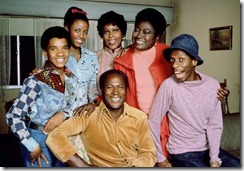





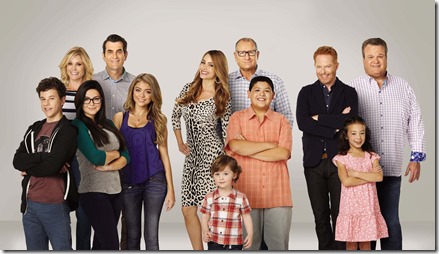
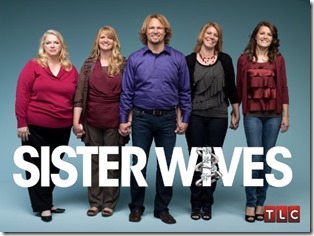
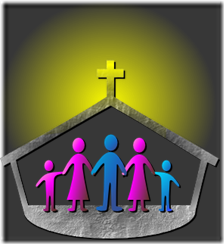
 I am a lifelong student of the Bible, and have been a pastor for over twenty-five years. My desire through this blog is to help people see things in the intersection of Scripture and real life that they might have missed. The careless handling of the Bible is causing a lot of problems in our churches and our culture--and is literally turning people away from the church, and, sometimes, God. I hope to treat Scripture with the respect it deserves, and, even if you don't agree with what I say, give you some insight.
Feel free to leave a comment. I promise to respond to you. All I ask is that you be respectful in your comments.
I am a lifelong student of the Bible, and have been a pastor for over twenty-five years. My desire through this blog is to help people see things in the intersection of Scripture and real life that they might have missed. The careless handling of the Bible is causing a lot of problems in our churches and our culture--and is literally turning people away from the church, and, sometimes, God. I hope to treat Scripture with the respect it deserves, and, even if you don't agree with what I say, give you some insight.
Feel free to leave a comment. I promise to respond to you. All I ask is that you be respectful in your comments. 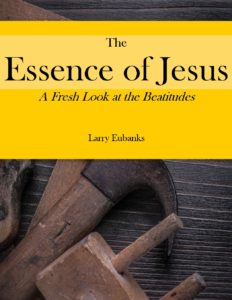
Connect with Me